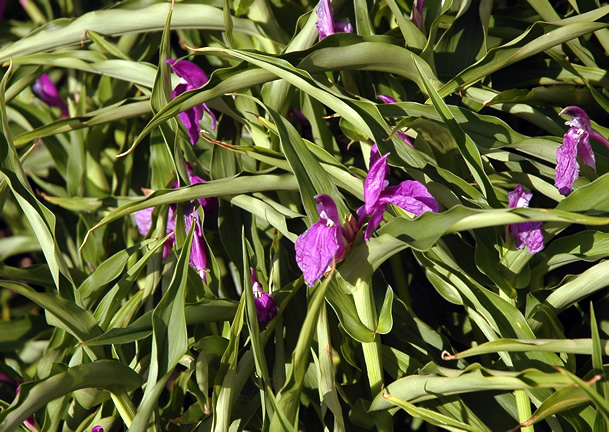| General Description | Growth originates from a pseudo stem and rhizomatous fleshy roots. |
| Propagation | Easy to germinate from seed the plants flower 2-3 years later. Division of mature clumps with care taken not to break or otherwise bruise the fleshy roots which can become entangled in mature clumps. |
| Cultivation | Most species are considered hardy to USDA Zone 6 although not all species and cultivars have been proven so. Plant in a moist but well drained soil in partial to three quarters sun; full sun can lead to leaf scorch. Scree, rock gardens and pots are suitable placements. I overwinter plants in a dormant state in a cool room and force into bloom in the spring. After plants have bloomed, decrease watering towards the end of summer by laying the pot on its side in a cool greenhouse or cold frame. Once the foliage dies back, carefully remove it and store the potted, dormant plants in a cool, dry location until spring. |
| Habitat | Plants generally require a relatively sunny position with moisture-retaining but well-drained soil. |
| Flower Description | The flowers have three outside petals ( the top one called the hood) and 4 staminoides with the lower two usually fused together forming the labellum. The bloom has a long floral tube which appears adapted to pollination by long-tongued insects.The flower colour is variable according to regional locations, ranging from lavender, purple-lilac, white, pink and red. |
| Fruit Description | The fruit is a capsule with arilate seeds, which are black in colour. |
.jpg)
